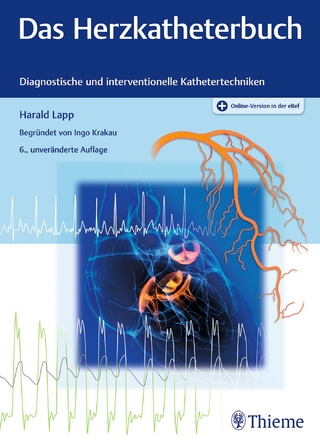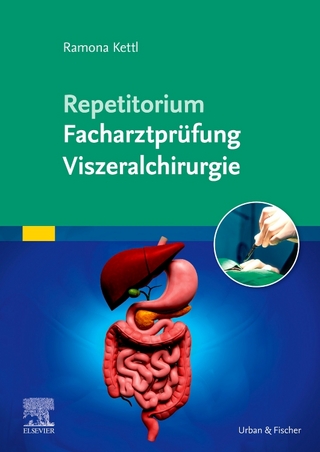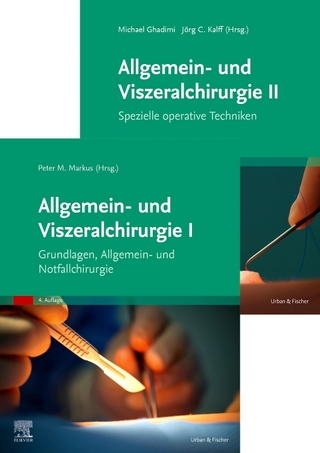
Perioperative Monitoring in Carotid Surgery
Steinkopff (Verlag)
978-3-642-95992-9 (ISBN)
I Perioperative protection.- Perioperative protection during carotid surgery on the part of the vascular surgeon.- Perioperative protective procedures in carotid endarterectomy on the part of the anaesthesiologist.- Perioperative monitoring of cerebral tissue oxygenation.- II Cerebral monitoring methods.- Electroencephalography: recording technique, pathophysiological comments, intraoperative monitoring.- Monitoring of somatosensory evoked potentials in carotid artery surgery.- Internal carotid artery back pressure to determine shunt requirement.- Measurement of regional cerebral oxygen saturation.- Postoperative evaluation of blood viscoelasticity response during carotid endarterectomy - considerable consequences for intraoperative management?.- Scintigraphic methods (PET, SPECT) to assess disturbances of the cerebral function before and after carotid endarterectomy (CEA).- III Intraoperative control methods.- Regional anesthesia in carotid surgery: technique and results.- Perioperative results of carotid endarterectomy with cervical epidural anesthesia.- Local anaesthesia and intraoperative quality control in carotid surgery.- Intraoperative angiography in carotid surgery.- IV Intraoperative ICBP, EEG, and SEP monitoring.- Intraoperative electroencephalography (EEG) monitoring and clinical outcome in carotid surgery.- ICBP in comparison to the intraoperative EEG monitoring.- Internal carotid back pressure versus somatosensory evoked potentials to determine shunt requirement.- Intraoperative monitoring during carotid endarterectomy: SEP versus EEG monitoring.- V Intraoperative Transcranial Doppler sonography and oxymetry.- Transcranial Doppler sonography and internal carotid back pressure during carotid surgery: value, limits and results in comparison tosomatosensory evoked potentials.- Use of EEG and TCD for assessment of brain function during operations on carotid artery.- Intraoperative monitoring in carotid surgery: transcranial Doppler versus somatosensory evoked potential method.- Transcranial cerebral oxymetry versus jugular venous oxygen saturation.- Transcranial cerebral oxymetry (TCO): a valid monitoring method during carotid surgery?.- VI Short- and long-term results after carotid surgery.- Polytetrafluoroethylene (PTFE) interposition graft in carotid surgery: indications and late results.- Exclusive PTFE patch angioplasty after conventional carotid endarterectomy: short- and long-term results.- Dacron versus Polyurethane (PUR) patch angioplasty in carotid surgery.- Eversion versus conventional carotid endarterectomy.- VII Short- and long-term results after carotid surgery.- Lesions of the aortic arch branches: long-term results after surgical procedures.- Operative results after reconstruction of extracranial carotid artery aneurysms (ECAA).- Carotid surgery before vertebral artery reconstruction: long-term results (1998-1994).- Ex vivo quantification of carotid stenoses: evaluation of eversion endarterectomy specimen.- Consensus conference on perioperative monitoring.
| Erscheint lt. Verlag | 1.11.2012 |
|---|---|
| Zusatzinfo | IX, 202 p. 94 illus. |
| Verlagsort | Heidelberg |
| Sprache | englisch |
| Maße | 155 x 235 mm |
| Gewicht | 338 g |
| Themenwelt | Medizinische Fachgebiete ► Chirurgie ► Herz- / Thorax- / Gefäßchirurgie |
| Medizin / Pharmazie ► Studium | |
| Schlagworte | carotid surgery • control methods • perioperative monitoring • stroke • Surgery • vascular surgery |
| ISBN-10 | 3-642-95992-X / 364295992X |
| ISBN-13 | 978-3-642-95992-9 / 9783642959929 |
| Zustand | Neuware |
| Informationen gemäß Produktsicherheitsverordnung (GPSR) | |
| Haben Sie eine Frage zum Produkt? |
aus dem Bereich


